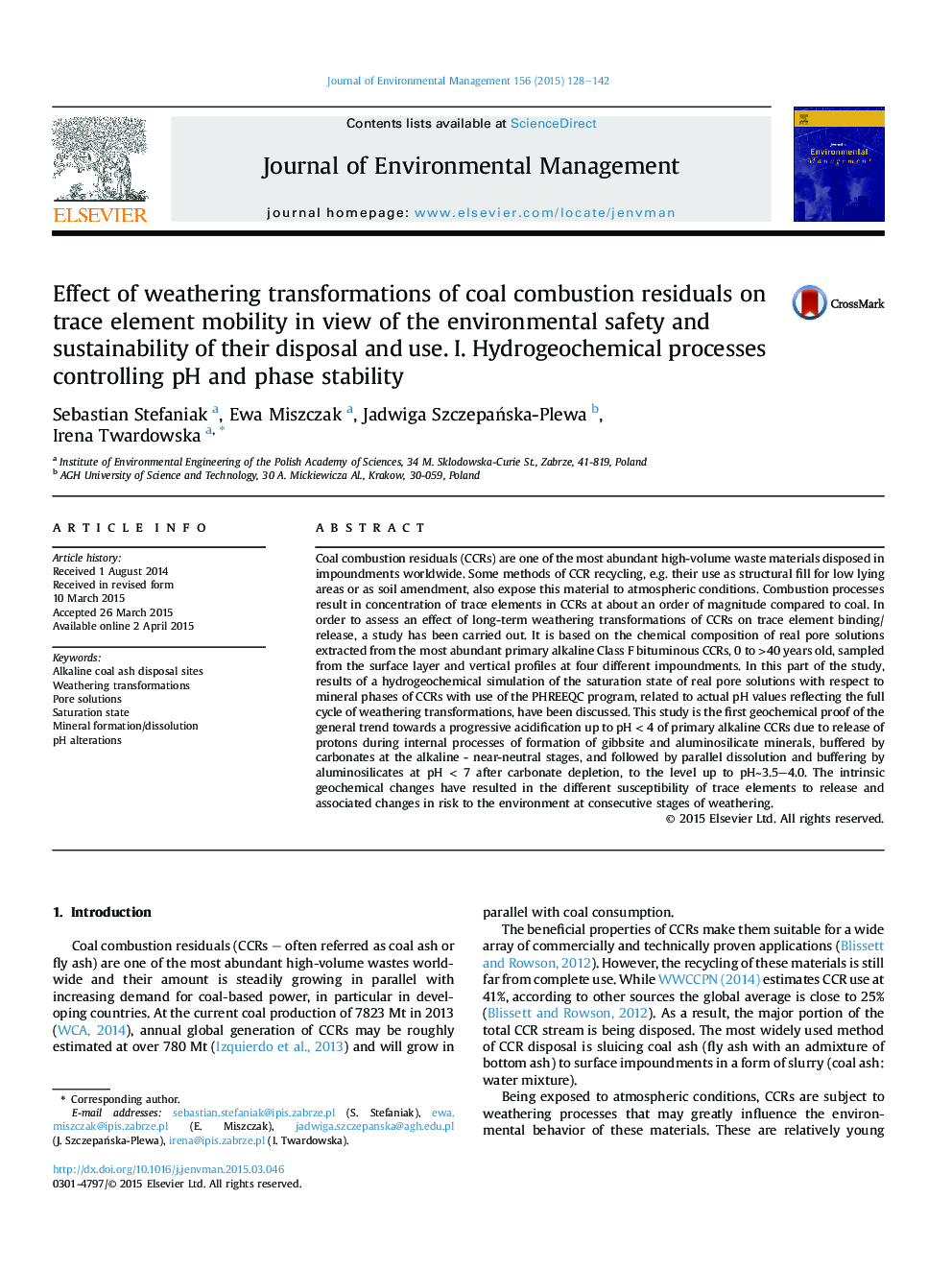| کد مقاله | کد نشریه | سال انتشار | مقاله انگلیسی | نسخه تمام متن |
|---|---|---|---|---|
| 7482291 | 1485256 | 2015 | 15 صفحه PDF | دانلود رایگان |
عنوان انگلیسی مقاله ISI
Effect of weathering transformations of coal combustion residuals on trace element mobility in view of the environmental safety and sustainability of their disposal and use. I. Hydrogeochemical processes controlling pH and phase stability
دانلود مقاله + سفارش ترجمه
دانلود مقاله ISI انگلیسی
رایگان برای ایرانیان
کلمات کلیدی
موضوعات مرتبط
مهندسی و علوم پایه
مهندسی انرژی
انرژی های تجدید پذیر، توسعه پایدار و محیط زیست
پیش نمایش صفحه اول مقاله

چکیده انگلیسی
Coal combustion residuals (CCRs) are one of the most abundant high-volume waste materials disposed in impoundments worldwide. Some methods of CCR recycling, e.g. their use as structural fill for low lying areas or as soil amendment, also expose this material to atmospheric conditions. Combustion processes result in concentration of trace elements in CCRs at about an order of magnitude compared to coal. In order to assess an effect of long-term weathering transformations of CCRs on trace element binding/release, a study has been carried out. It is based on the chemical composition of real pore solutions extracted from the most abundant primary alkaline Class F bituminous CCRs, 0 to >40 years old, sampled from the surface layer and vertical profiles at four different impoundments. In this part of the study, results of a hydrogeochemical simulation of the saturation state of real pore solutions with respect to mineral phases of CCRs with use of the PHREEQC program, related to actual pH values reflecting the full cycle of weathering transformations, have been discussed. This study is the first geochemical proof of the general trend towards a progressive acidification up to pHÂ <Â 4 of primary alkaline CCRs due to release of protons during internal processes of formation of gibbsite and aluminosilicate minerals, buffered by carbonates at the alkaline - near-neutral stages, and followed by parallel dissolution and buffering by aluminosilicates at pHÂ <Â 7 after carbonate depletion, to the level up to pHâ¼3.5-4.0. The intrinsic geochemical changes have resulted in the different susceptibility of trace elements to release and associated changes in risk to the environment at consecutive stages of weathering.
ناشر
Database: Elsevier - ScienceDirect (ساینس دایرکت)
Journal: Journal of Environmental Management - Volume 156, 1 June 2015, Pages 128-142
Journal: Journal of Environmental Management - Volume 156, 1 June 2015, Pages 128-142
نویسندگان
Sebastian Stefaniak, Ewa Miszczak, Jadwiga SzczepaÅska-Plewa, Irena Twardowska,